How many top prospects are there in the 2020 NBA draft?
This was an unusual year even before the NCAA tournament and many conference tournaments were canceled because of the coronavirus pandemic because there was so little consensus about the top prospects, so few of whom played college basketball.
That bears out statistically too. Historically, the best prospects have been those who rate in the top 10 of my stats-only projections and go among the top 10 picks. Typically, there's an average of about three such players from the college ranks, but this year only one NCAA player among ESPN's top 10 prospects is also in my stats-only top 10: Iowa State guard Tyrese Haliburton.
How much does an unusually strong crop of prospects playing overseas, highlighted by LaMelo Ball, help fill the void?
Let's take an updated look at my draft projections that combine statistics and scouting projections, including where players rank in our top 100.
My statistical projections start by translating NCAA or international performance to projected NBA rookie performance, also factoring in regression to the mean for outlier performance. I then calculate projected value over the player's first five NBA seasons by combining rookie projections with age. To that stats-only version, I also add each player's top-100 ranking to build the more accurate consensus projections.
One note on this year's projections: While my projections have utilized translated performance in the Nike EYBL thanks to statistics compiled by Neil Johnson of ESPN Stats & Information, issues with the data collection during the 2018 EYBL meant they were no longer predictive of college performance as in past years. So I have not included EYBL stats from that year, when the bulk of this year's one-and-done prospects played AAU, though projections for players who participated in the 2017 EYBL (like James Wiseman) still incorporate that data.
For more details and past projections, check out a more detailed explanation. Otherwise, let's get to my top 30.
1. LaMelo Ball
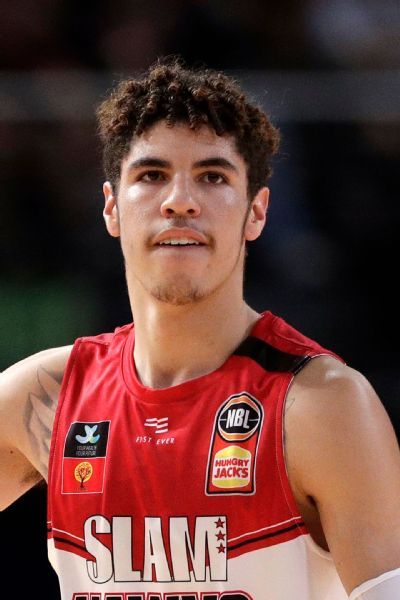
Illawarra Hawks
PG
Top 100: No. 1
Stats: No. 1
Consensus: 4.9 WARP
In a draft that is wide open at the top, Ball's performance in the Australian NBL stands out. While the level of competition was low, Ball rated as the fourth-best player in the league at age 18 -- ahead of NBA veterans Bryce Cotton and Scott Machado, among others.
Ball's inefficient shooting (he made just 25% of his 3-point attempts) is a concern, but his playmaking and rebounding are both preternaturally strong. As a result, the gap between his consensus projection and anyone else's is larger than the difference between No. 2 and No. 9 in the rankings.
2. Tyrese Haliburton

Iowa State
PG
Top 100: No. 8
Stats: No. 2
Consensus: 3.4 WARP
Haliburton's freshman season stood out statistically, though he had a historically low usage rate for a prospect, finishing just 9% of the Cyclones' plays with a shot, trip to the free throw line or turnover. A strong performance at last summer's FIBA U19 World Cup put Haliburton firmly on the radar, and he backed it up by more than doubling his usage rate to 20% as a sophomore without sacrificing much efficiency.
Haliburton's strong steal and block rates are key indicators of his ability to read plays on defense, and he projects as one of the better shooters in the draft after hitting 43% of his 3s in college.
3. Anthony Edwards

Georgia
SG
Top 100: No. 2
Stats: No. 12
Consensus: 2.8 WARP
A decent but not spectacular freshman season marks Edwards as a relatively risky top pick. Other top-3 players with similar stats-only projections include hits (Victor Oladipo, Derrick Rose) but also big misses (Michael Kidd-Gilchrist, Andrew Wiggins).
Edwards' value as a pro probably will depend on his ability to become a consistent 3-point threat after hitting just 29% of his 7.7 attempts per game in 2019-20.
4. Cole Anthony

North Carolina
PG
Top 100: No. 19
Stats: No. 3
Consensus: 2.7 WARP
Few top prospects have had such a big disparity between AAU and college performance as Anthony, who rated as the EYBL's best player both in 2017 as a rising junior (which is part of this projection) and again before his senior year of high school in 2018.
Based strictly on his season at North Carolina, where he made a disappointing 40% of his 2-point attempts and was far less effective accumulating assists and steals, Anthony would rate as a late first-round prospect rather than on in the top 5.
5. Devin Vassell

Florida State
W
Top 100: No. 11
Stats: No. 4
Consensus: 2.6 WARP
The strongest 3-and-D prospect in this year's draft, Vassell made 42% of his 3-point attempts over two seasons at Florida State and boasts a strong combination of steal and block rates that marks him as a plus wing defender.
He compares well to Danny Green coming out of North Carolina. Since we originally ran my projections in June, Vassell has moved up five spots in the top 100, moving him up to fifth in my consensus projections.
6. Deni Avdija
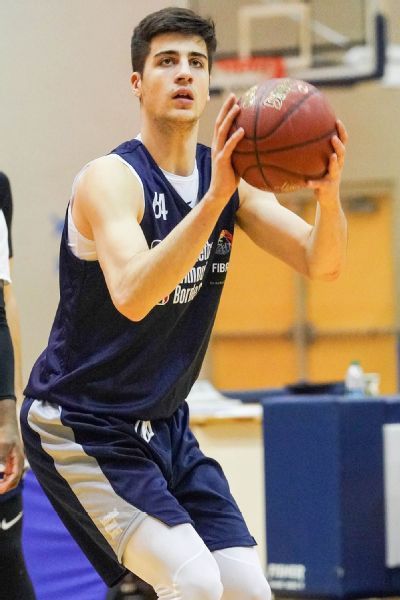
Maccabi Tel Aviv
F
Top 100: No. 4
Stats: No. 9
Consensus: 2.6 WARP
Unlike almost everyone else in this class, Avdija returned to action over the summer, becoming the youngest player ever to win MVP of the Israeli Basketball Premier League. That solidified his projection, which improved slightly, but Avdija already ranked sixth overall.
7. Onyeka Okongwu

USC
PF
Top 100: No. 5
Stats: No. 13
Consensus: 2.3 WARP
The top-rated post player in my projections, Okongwu was productive enough as a freshman to offset the higher replacement level for big men. Okongwu has the fifth-best block projection among players in our top 100, along with an atypically strong steal rate for a post player. Okongwu was efficient offensively thanks to 62% shooting on 2s and 72% from the foul line.
8. R.J. Hampton
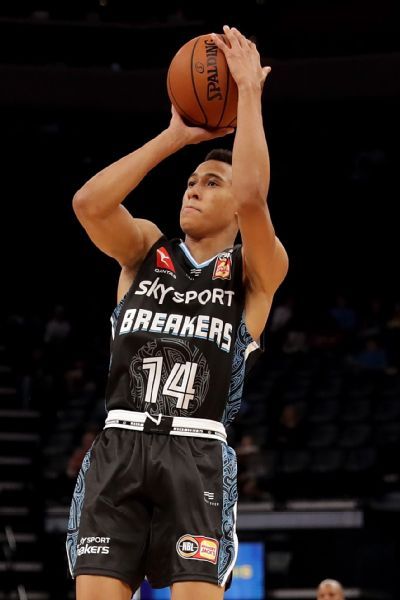
New Zealand Breakers
G
Top 100: No. 15
Stats: No. 5
Consensus: 2.2 WARP
Hampton wasn't nearly as effective in the NBL as Ball was, ranking as the league's 45th-best player on a per-minute basis. He was almost equally inefficient without the kind of elite playmaking we saw from Ball, and his strong projection relies more heavily on his stats being regressed to the mean.
As a result, I'd be wary of considering Hampton a top-5 prospect but would defer to those scouts who believe he belongs in the middle of the first round.
9. Killian Hayes
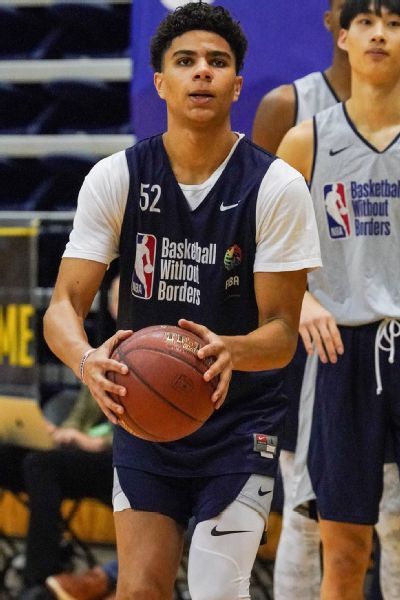
Ratiopharm Ulm
PG
Top 100: No. 10
Stats: No. 15
Consensus: 1.8 WARP
Expect growing pains if a team drafts the 19-year-old Hayes in the top 10 and gives him the keys to the offense right away. Only two NBA-bound players in my database (Kendall Marshall and David Stockton) have had higher projected turnover rates.
Yet in time, Hayes' strong finishing for his size and court vision could make him a capable lead ball handler.
10. Aaron Nesmith

Vanderbilt
W
Top 100: No. 13
Stats: No. 16
Consensus: 1.7 WARP
Nesmith ranks this high on his potential as a shooter. He shot an incredible 52% on 115 3-point attempts during an abbreviated sophomore season, and while that's obviously not sustainable -- Nesmith shot just 34% from beyond the arc as a freshman -- 83% foul shooting does mark him as likely to show NBA 3-point range.
11. Isaiah Joe

Arkansas
SG
Top 100: No. 48
Stats: No. 6
Consensus: 1.6 WARP
Perhaps the best pure shooter in the draft, Joe made just 34% of his 3s as a sophomore but attempted an incredible 10.6 per game. He hit 41% of his 8.0 attempts as a freshman. While he slumped beyond the arc, Joe did hit 89% of his free throws as a sophomore, an encouraging sign. Joe doesn't do much else besides shoot, which helps explain his low spot in the top 100s, but given solid size and his 3-point volume, he's got a chance to be a Terrence Ross-style threat off the bench.
12. Isaac Okoro

Auburn
SF
Top 100: No. 7
Stats: No. 33
Consensus: 1.6 WARP
Okoro ranks in the top 15 largely on the strength of his position in the top 100, as he had an underwhelming freshman campaign for a lottery pick. Only Okoro's solid block rate for a wing showcases the athletic potential scouts value, and he must improve on 29% 3-point shooting -- with 67% accuracy at the foul line not encouraging in that regard.
13. Malachi Flynn

San Diego State
PG
Top 100: No. 31
Stats: No. 8
Consensus: 1.5 WARP
After two solid years at Washington State, Flynn broke through as an elite college point guard after transferring to San Diego State. Size (he's 6-foot-1) could be an issue for Flynn in the NBA, but he's a capable shooter with good markers in terms of reading the game.
14. Cassius Winston

Michigan State
PG
Top 100: No. 29
Stats: No. 10
Consensus: 1.5 WARP
In recent years, veteran college point guards considered too small to be NBA starters have been a consistent source of draft value. Like Winston, Monte Morris (pick No. 51 in 2017) and Fred VanVleet (undrafted in 2016) weren't high picks despite top-10 stats-only projections. While it took them a couple of seasons to establish themselves, Morris is now a top-tier backup and VanVleet a valuable starter.
Winston's excellent shooting (43% career from 3, 85% on free throws) should translate well to the NBA.
15. Patrick Williams

Florida State
F
Top 100: No. 9
Stats: No. 32
Consensus: 1.5 WARP
Averaging a block and a steal per game in just 22.5 minutes off the bench was impressive for Williams. On the downside, weak defensive rebounding -- worse than that of his teammate Vassell -- might make it difficult for Williams to play as a small-ball 4 in the NBA.
16. James Wiseman

Memphis
C
Top 100: No. 3
Stats: No. 70
Consensus: 1.5 WARP
Because Wiseman played in only three college games, his unimpressive statistical projection is based almost entirely on the 2017 EYBL. Playing for Team Penny, Wiseman was a dominant shot-blocker but not the kind of interior force you'd expect from one of the nation's top prospects. His steal rate (only five in 17 games) was also a concern.
Wiseman did dominate low-level competition in his first two games at Memphis and was productive, though not a difference-maker, in a loss to Oregon before being ruled ineligible.
17. Saddiq Bey

Villanova
SF
Top 100: No. 17
Stats: No. 21
Consensus: 1.4 WARP
Unusual for a statistically top-rated player, Bey didn't contribute much in terms of defensive stats, though he projects as a capable individual defender. Instead, his projection owes primarily to 42% 3-point shooting and mistake-free play on offense.
18. Jahmi'us Ramsey

Texas Tech
G
Top 100: No. 35
Stats: No. 11
Consensus: 1.4 WARP
As a freshman, Ramsey played a key role for the Red Raiders; his 26% usage rate ranked sixth among first-year players in the power conferences, per Sports-Reference.com, and of that group only Duke's Vernon Carey Jr. had a better true shooting percentage.
One concern is that Ramsey's 43% accuracy on 141 3-pointers might have been a fluke, as he shot just 64% from the line.
19. Trevelin Queen

New Mexico State
SF
Top 100: No. 84
Stats: No. 7
Consensus: 1.3 WARP
My top-ranked player not currently projected among the ESPN top 50, junior college product Queen earned some attention from scouts because of his defensive potential. Among players in my college projection database listed at 6-foot-6 or taller, only Michael Carter-Williams had a better projected steal rate than Queen, who is also an above-average shot-blocker for a wing.
Queen's 39% 3-point shooting on 5.3 attempts per game as a senior suggests 3-and-D potential.
20. Tyrese Maxey

Kentucky
SG
Top 100: No. 14
Stats: No. 28
Consensus: 1.3 WARP
Maxey's shot is also projectable based on the disconnect between his 29% 3-point shooting and 83% accuracy at the line. Becoming a perimeter threat will be key given Maxey didn't show particularly strong ability to create for others in his one season at Kentucky.
21. Theo Maledon
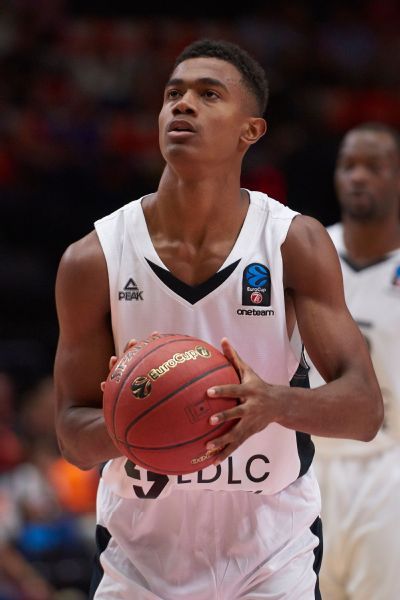
ASVEL
PG
Top 100: No. 24
Stats: No. 20
Consensus: 1.2 WARP
Like Hayes, Maledon played a key role for a high-level European team at a young age, though he looks a bit further away from contributing in the NBA. Maledon's playmaking numbers haven't been nearly as strong, and his 3-point shooting could suffer from the transition to the longer line.
22. Nico Mannion

Arizona
PG
Top 100: No. 25
Stats: No. 24
Consensus: 1.1 WARP
Mannion's freshman season was projectable. While he wasn't an efficient scorer at Arizona, Mannion could boost his efficiency by improving on 33% 3-point shooting, something his 80% accuracy at the free throw line suggests he has the potential to do.
23. Xavier Tillman

Michigan State
PF
Top 100: No. 32
Stats: No. 19
Consensus: 1.1 WARP
The most surprising result in this year's draft projections is that Tillman finishes as the second-rated post prospect, ahead of likely lottery picks Obi Toppin (0.7 projected WARP) and Precious Achiuwa (0.5) -- both of whom are outside the top 30. Age is a factor: Though Toppin has played only two college seasons to Tillman's three, as a redshirt sophomore Toppin is almost a year older, and one-and-done prospect Achiuwa is just eight months younger than Tillman.
Toppin is the far more skilled scorer and Achiuwa more versatile defensively, but Tillman lacks their weaknesses at either end of the court, making him a more complete prospect. Per Sports-Reference.com, he actually led all NCAA players in box plus-minus during 2019-20, with Toppin third and Achiuwa not cracking the top 200.
24. Kira Lewis Jr.

Alabama
PG
Top 100: No. 16
Stats: No. 37
Consensus: 1.1 WARP
Though he is a sophomore, Lewis is younger than most of the one-and-done prospects in this year's draft. He was more productive last season than Mannion and Maxey but doesn't benefit as much from the regression to the mean factor in my projections because he has two years of college data to their one.
25. Tyrell Terry

Stanford
PG
Top 100: No. 39
Stats: No. 20
Consensus: 1.1 WARP
Relatively unheralded as a prospect entering the season, Terry put himself on the NBA's radar with impressive efficiency for a freshman point guard, knocking down 41% of his 3-point attempts and 89% of his free throws. He's still developing as a playmaker.
26. Josh Green

Arizona
SG
Top 100: No. 21
Stats: No. 29
Consensus: 1.0 WARP
Another one-and-done prospect with a similar combo of stats and ranking as Mannion, Green, who is from Australia, must improve on 45% 2-point shooting as a freshman, though he posted encouraging defensive numbers.
27. Tre Jones

Duke
PG
Top 100: No. 30
Stats: No. 26
Consensus: 1.0 WARP
Returning for his sophomore season allowed Jones to improve his 3-point shooting from 26% as a freshman to 36%. The adjustment to the longer line could be an issue, but Jones' form doesn't appear broken, as he has made 77% of his career free throws.
28. Desmond Bane

TCU
SG
Top 100: No. 34
Stats: No. 25
Consensus: 0.9 WARP
Atypically young for a four-year prospect -- he turned 22 in June -- Bane is an excellent shooter who converted 43% of his career 3-point attempts and showed solid playmaking chops for a player of his ilk.
29. Nate Hinton

Houston
SG
Top 100: No. 56
Stats: No. 17
Consensus: 0.9 WARP
The lone newcomer to my top 30 from June, Hinton replaces Gonzaga guard Joel Ayayi, who opted to return to college. Statistically, Hinton's strength is his rebounding from the perimeter. As a 6-foot-5 shooting guard, he posted the best rebound percentage on his team. His steal rate was also strong, but Hinton must continue the improvement he showed as a shooter during his sophomore season (making 39% of his 3-point attempts, up from 34% as a freshman) to stay on the court.
30. Markus Howard

Marquette
PG
Top 100: No. 60
Stats: No. 14
Consensus: 0.9 WARP
Because of his small stature (he's listed at 5-foot-11) and shoot-first style, Howard is the rare early developing star who stayed four years in college. He did improve his playmaking as an upperclassmen, but if he's going to stick in the NBA it probably will be as a Patty Mills-style combo guard, having hit 43% of his career 3-point attempts.
Full projections for top-100 prospects and others of note:
